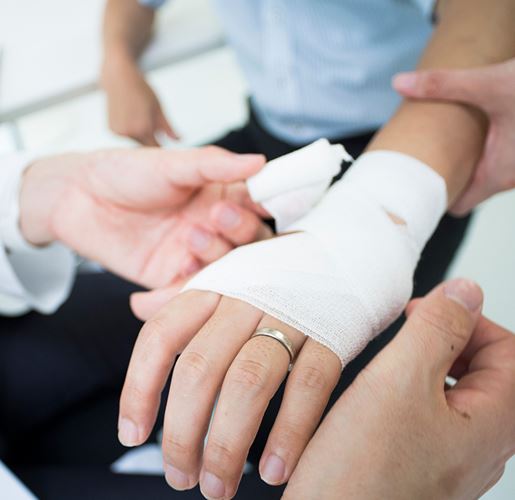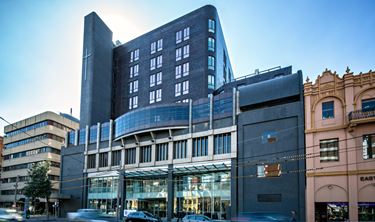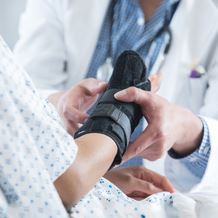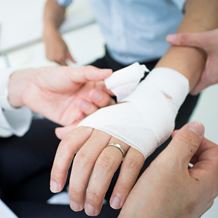Wrist Fracture
- Home
- Services
- Orthopaedics
- Wrist Orthopaedics
- Common Wrist Conditions
- Wrist Fracture
What is a wrist fracture?
A wrist fracture occurs when one of the wrist bones is cracked or broken, usually as the result of a fall, a motor accident or a sporting injury. Wrist fractures can be extremely painful, and are often accompanied by swelling, tenderness, bruising, numbness and sometimes visual deformity. The wrist is made up of eight small bones that connect to the two arm bones, which means there are many different types of wrist fracture. The most common wrist fracture type is a distal radius fracture (where the radius arm bone breaks near the wrist) or a scaphoid fracture (breaking the small bone near the base of the thumb). A scaphoid fracture may sometimes be misdiagnosed as a sprain and should be confirmed by X-Ray to avoid poor healing. There are three main types of fracture:
- Simple fracture – where the fractured wrist bone is still well aligned.
- Unstable fracture – where the bone fragments are displaced.
- Open fracture – here the broken bone has cut through the skin.
How is it treated?
Wrist fracture treatment will vary depending on the type of fracture and the severity of the condition. Most wrist fractures will heal well without surgical intervention using a cast or splint followed by a course of physiotherapy to reduce any stiffness. Where there is a severe wrist fracture, surgery may be required to restore joint alignment and mobility. This can be done using plates, screws and pins. If the bones need to be manipulated back into position, this is known as a reduction and is sometimes performed as open surgery. If there is a gap in the bones, a bone graft may be required to help with the healing.
How long does it last?
A wrist fracture can take from several weeks to several months to fully heal, depending on the severity of the condition. The cast is usually removed after 6 weeks, at which time you may experience some stiffness. Normal function can resume after 8 weeks with a return to contact sport by 12 weeks. It is normal to have some pain, bruising and continued swelling for some months afterwards. In more severe cases, a full recovery could take up to 6 months.

Other wrist surgeries and procedures
Common wrist conditions
Find a hospital with orthopaedic services
Our Hospitals
Related services

Carpal Tunnel Release Surgery
A common medical procedure to relieve pressure on the median nerve.
Read More
Other Wrist Surgeries and Procedures
Options to relieve painful symptoms of common wrist conditions.
Read More
Find a Specialist
Talk to our world-leading orthopaedic specialists about the most suitable treatment options.
Read More